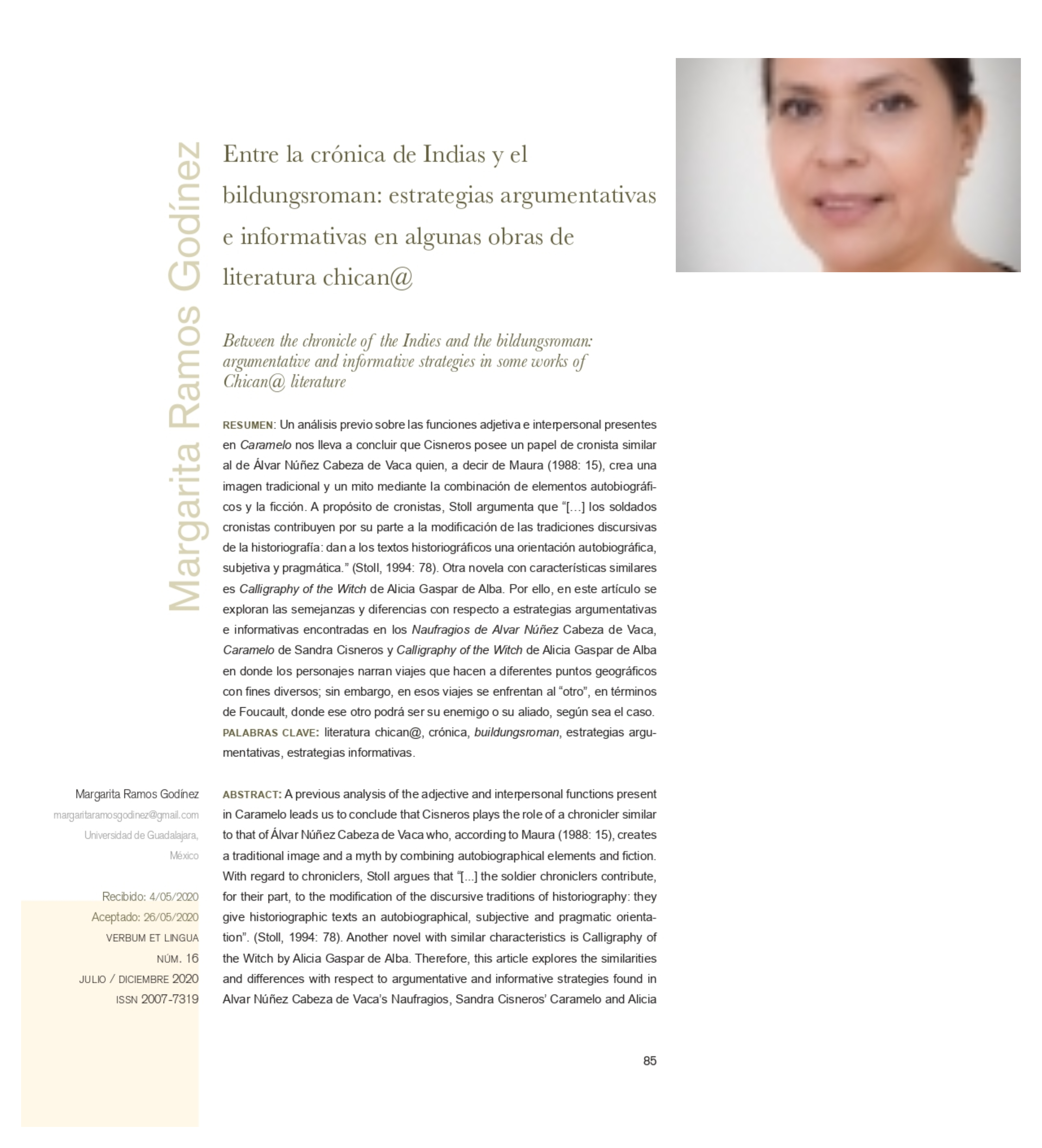Entre la crónica de Indias y el bildungsroman: estrategias argumentativas e informativas en algunas obras de literatura chican@
DOI:
https://doi.org/10.32870/vel.vi16.152Parole chiave:
Literatura chican@, Crónica, Buildungsroman, Estrategias argumentativas, Estrategias informativasAbstract
Un análisis previo sobre las funciones adjetiva e interpersonal presentes en Caramelo nos lleva a concluir que Cisneros posee un papel de cronista similar al de Álvar Núñez Cabeza de Vaca quien, a decir de Maura (1988: 15), crea una imagen tradicional y un mito mediante la combinación de elementos autobiográficos y la ficción. A propósito de cronistas, Stoll argumenta que “[…] los soldados cronistas contribuyen por su parte a la modificación de las tradiciones discursivas de la historiografía: dan a los textos historiográficos una orientación autobiográfica, subjetiva y pragmática.” (Stoll, 1994: 78). Otra novela con características similares es Calligraphy of the Witch de Alicia Gaspar de Alba. Por ello, en este artículo se exploran las semejanzas y diferencias con respecto a estrategias argumentativas e informativas encontradas en los Naufragios de Alvar Núñez Cabeza de Vaca, Caramelo de Sandra Cisneros y Calligraphy of the Witch de Alicia Gaspar de Alba en donde los personajes narran viajes que hacen a diferentes puntos geográficos con fines diversos; sin embargo, en esos viajes se enfrentan al “otro”, en términos de Foucault, donde ese otro podrá ser su enemigo o su aliado, según sea el caso.
Downloads
Metriche













